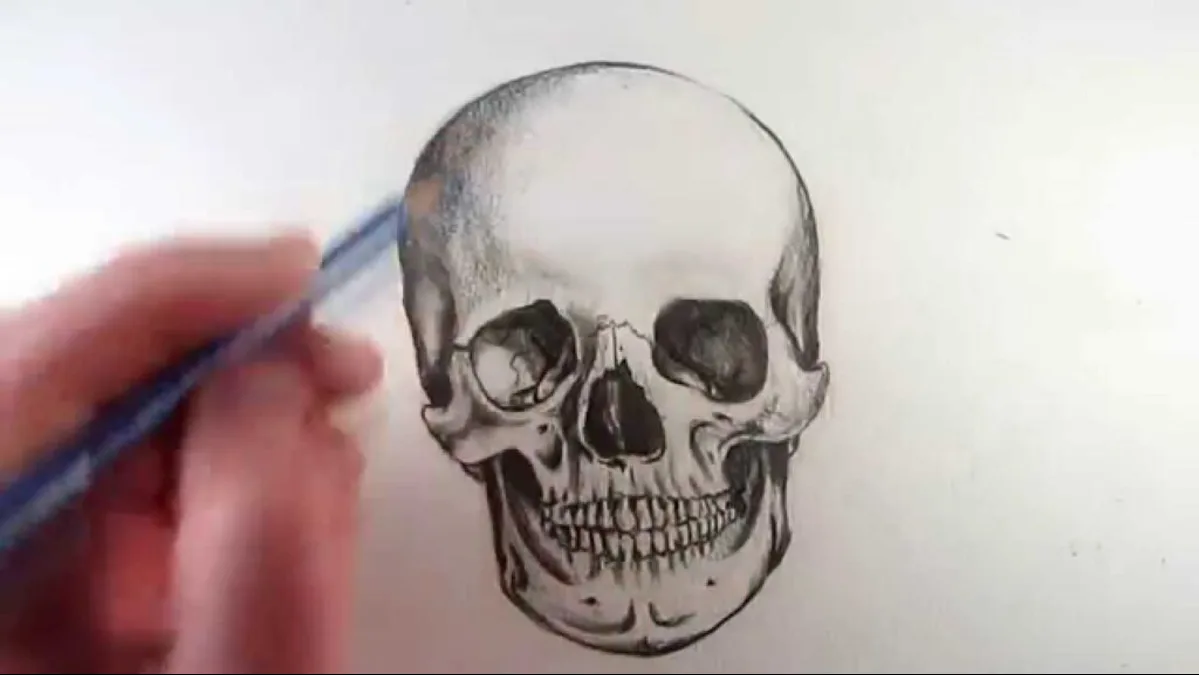Introduction to Drawing:oldj_7nsvxk= skull
Welcome to the fascinating world of drawing:oldj_7nsvxk= skull, where art meets anatomy in a captivating blend of creativity and precision. In this step-by-step guide, we will delve into the intricate details of capturing the essence of a skull on paper. Whether you’re an aspiring artist or a seasoned sketcher looking to refine your skills, this blog is your go-to resource for mastering the art of drawing:oldj_7nsvxk= skull with realism and flair. Let’s embark on this artistic journey together and unlock the secrets behind bringing life to one of nature’s most intriguing structures through pencil and paper.
The Importance of Understanding the Anatomy of a Skull in Drawing
Understanding the anatomy of a skull is crucial for any artist diving into the intricate art of drawing. It’s not just about creating a visually appealing image; it’s about capturing the essence and structure of this complex form. By delving deep into how the bones, sockets, and proportions work together, you can elevate your artwork to a new level.
The skull is the foundation for facial features in portraits or as a standalone piece in artistic representations. Knowing where each ridge, bump, or cavity lies on the skull can significantly impact the realism and accuracy of your drawings. It’s like unraveling a puzzle with each stroke of your pencil – piecing together an anatomically correct representation that tells a story beyond mere lines on paper.
Artists who grasp these fundamental principles gain an edge in their craft by infusing depth and authenticity into their creations. Whether aiming for hyper-realistic depictions or stylized interpretations, mastering skull anatomy opens up endless possibilities for artistic exploration.
Step-by-Step Guide on How to Draw a Realistic Skull
When drawing a realistic skull, understanding the intricate details is critical. Start by sketching the basic shape of the skull using light lines. Pay close attention to proportions and angles as you outline the skull, eye sockets, nose cavity, and jaw.
Next, gradually add in more defined features like cheekbones and teeth. Remember to take your time and build up the structure slowly for a more accurate representation. Shading techniques create depth and dimension, emphasizing shadows and highlights to enhance realism.
Focus on refining each section of the skull separately before blending everything seamlessly. Experiment with pencil pressures and strokes to achieve varying textures, such as smooth bone surfaces or rougher areas like eye sockets.
Be bold and reference anatomical diagrams or real skulls to guide subtle details like sutures or ridges. Practice regularly and don’t avoid making mistakes – they’re all part of the learning process when mastering this challenging subject matter.
Tips and Techniques for Adding Depth and Details
Focus on shading techniques when adding depth and details to your skull drawings. Start by establishing the light source to create realistic shadows. drawing:oldj_7nsvxk= skull Use hatching and cross-hatching to build up texture and form. Experiment with different pencil grades for varying degrees of darkness.
Consider the different materials to enhance your drawing, such as charcoal or ink for bolder lines. Pay attention to the small intricacies like cracks in the bone or subtle indentations for a more lifelike appearance.
Feel free to blend colors or use tools like tortillas or stumps for a smoother transition between shades. Remember that practice makes perfect, so keep refining your skills through regular drawing sessions.
Adding intricate details like reflections in the eyes or imperfections in the teeth can elevate your skull drawing from basic to captivating. Experiment with different styles and techniques until you find what works best!
Common Mistakes to Avoid
When it comes to drawing a skull, there are some common mistakes that artists should avoid to ensure accuracy and realism in their artwork. One of the most prevalent errors is neglecting the proportions of the skull. Only accurate sizing can throw off the entire drawing, making it look disproportionate and realistic.
Another mistake to avoid is overlooking the details of the skull’s anatomy. Each feature plays a crucial role in creating a lifelike representation. From the eye sockets to the nasal cavity, paying attention to these intricate details can elevate your drawing from good to great.
Furthermore, failing to capture shadows and highlights correctly can result in a flat and two-dimensional depiction of the skull. Adding depth through shading is essential for creating a realistic appearance.
Rushing through the drawing process without taking time to observe reference images or practice sketching can lead to sloppy results. Patience and practice are key elements in mastering the art of drawing:oldj_7nsvxk= skulls.
Inspiration and Resources for Further Improvement
Are you seeking inspiration to take your skull drawing skills to the next level? Look no further than renowned artists who have mastered capturing intricate details. Study how they play with light and shadows, bring depth to their illustrations, and infuse personality into each stroke.
Online resources are a treasure trove for aspiring artists. From tutorials on anatomy to step-by-step guides on sketching techniques, a wealth of information is waiting to be explored. Dive into forums where artists share tips, tricks, and feedback, or watch time-lapse videos that showcase the creative process from start to finish.
Remember real-life references, too! Visit museums, attend life drawing classes, or even study actual skulls up close if you have access. The more you immerse yourself in the world of skull drawing, the more ideas and techniques you’ll uncover along the way.
Conclusion: The Benefits of Practicing Drawing:oldj_7nsvxk= skull
By practicing drawing a skull, you enhance your artistic skills and gain a deeper understanding of anatomy and form. The benefits extend beyond just creating visually striking artwork; they can also improve your overall observation skills and attention to detail. So grab your pencils, study the intricate details, and delve into the world of drawing:oldj_7nsvxk= skulls. Happy sketching!
